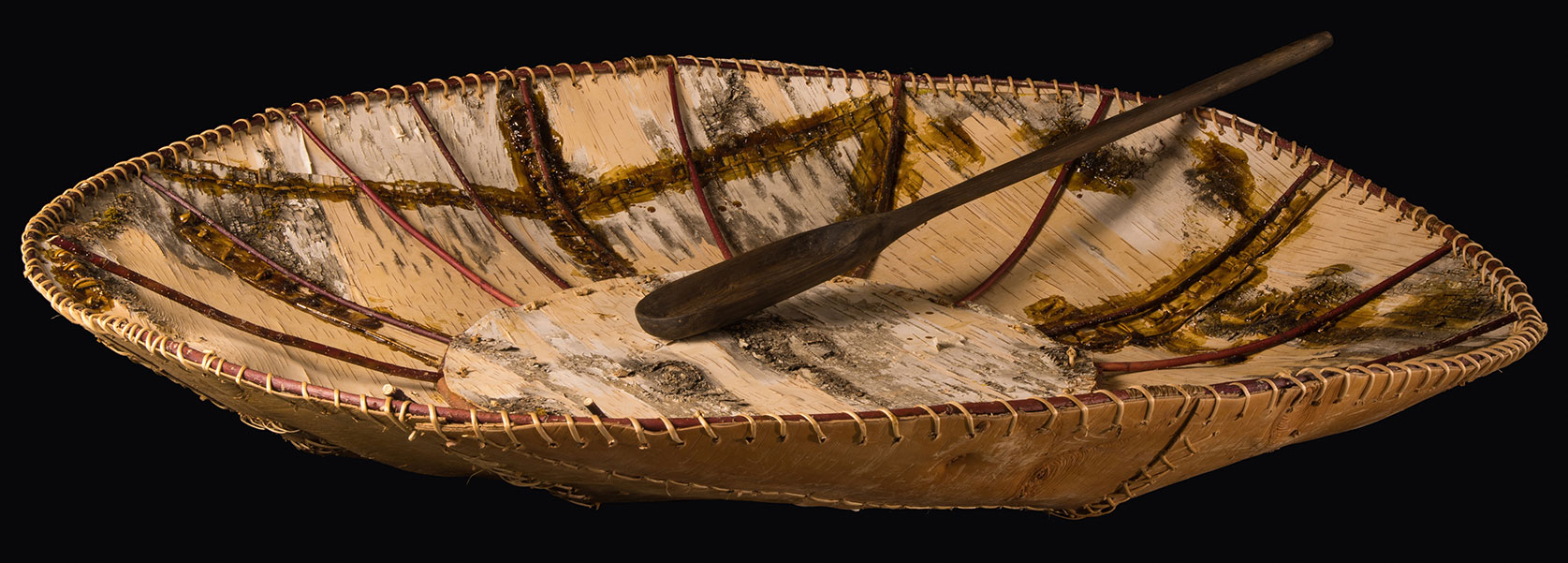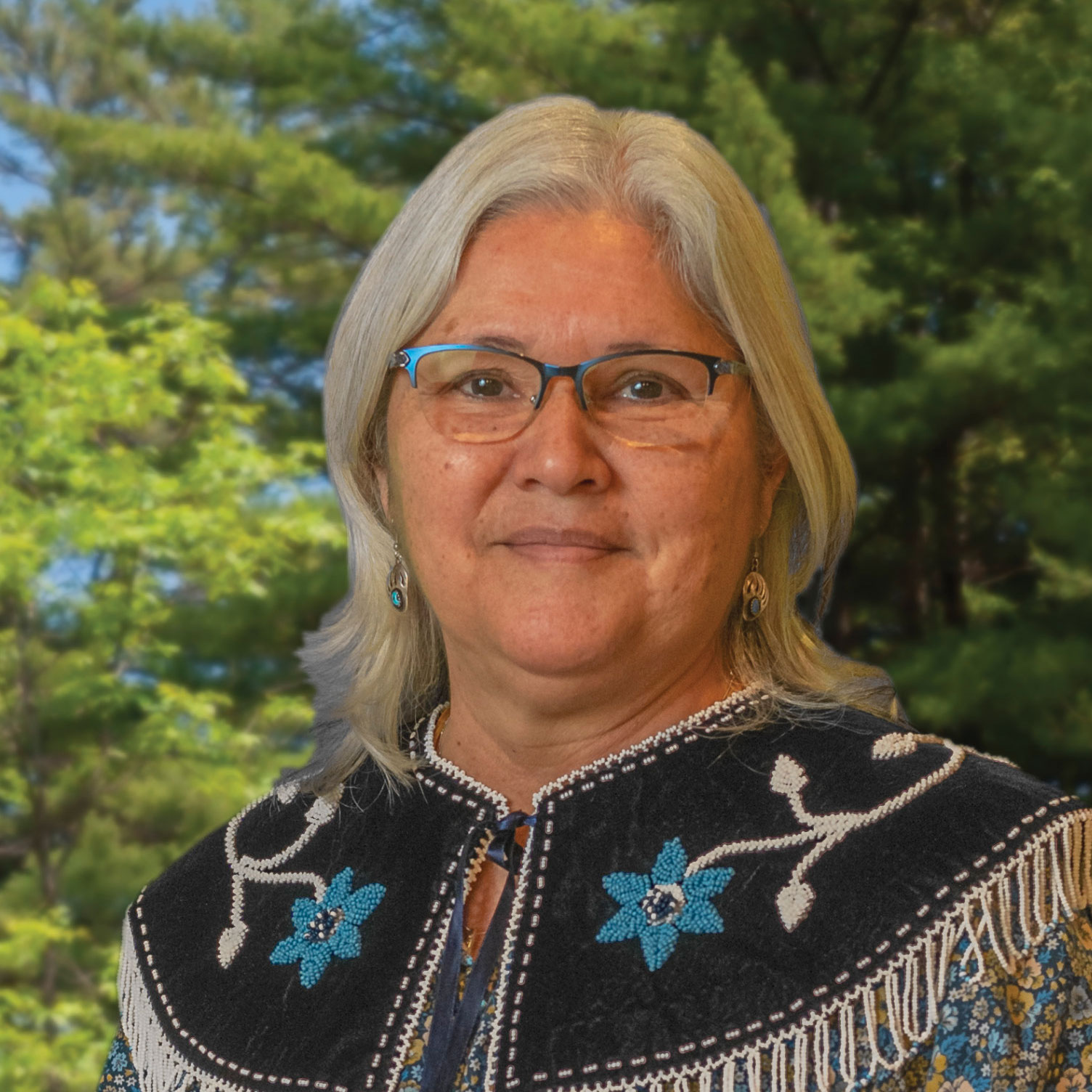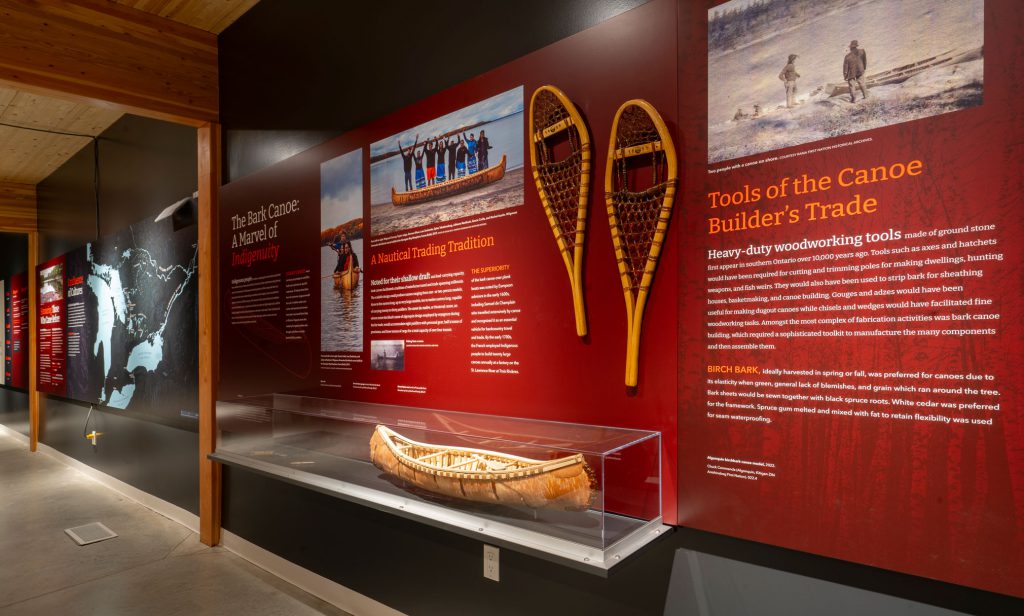
Birchbark gathering tray and ladle, 2022. Chuck Commanda (Algonquin, Kitigan Zibi Anishinabeg First Nation). The Great Dish is a metaphor for the nutritional and medicinal bounty supplied by nature, free for all to benefit from, provided proper respect is shown and nothing is wasted. 022.4 A rounded spoon is used to take sustenance from the Great Dish so that no one would accidently be injured in doing so. The spoon represents the tradition of sharing among the Indigenous nations.
The Great Dish
Huron-Wendat, Anishinaabek, Métis, and Mohawk cultures are diverse. The Huron-Wendat and Mohawk speak Iroquoian languages. The Anishinaabek speak Algonkian languages. The Métis created their own language, often referred to as Michif. No matter what the language, one common metaphor was the Great Dish, representing the sharing of nature’s abundance of foods and medicines. A treaty was made between the Indigenous nations of Southern Ontario and Upstate New York to share the bounty of this land. It was agreed upon that they would not fight over territory or natural resources but would all derive a common benefit from what the dish provides.
The agreement is that everyone takes the land (dish) with one spoon that has no sharp edges so that no one gets hurt while sharing the resources.
Under the Great Dish Treaty people agreed to common rules:
- Only take what you need;
- Don’t waste what it offers;
- Share what is in the Dish with everyone; and
- Keep the Dish clean.
Message of Wampum
The cultures of this region share a common belief in the power of tiny, tubular, shell beads to carry important teachings and to confirm treaty agreements. These beads are called wampum and are woven into large mats, strings, or ‘belts’ to record essential events or teachings about our connections to this place and to each other. For the Haudenosaunee, this belt was made to symbolise the Great Dish from which we gain our sustenance and healing medicines.

Great Dish Wampum Belt (replica), 2002. Gayadowehs LuAnn Hill-MacDonald (Mohawk, Six Nations of the Grand River). The simple design of this wampum belt represents a profound idea — all people have an equal right to take nourishment and healing from the earth, seen as a dish, the central figure on this wampum belt. In the centre is a beaver tail to represent the food that was to be shared by the Wyendat, Anishinaabek, and Haudenosaunee. The wampum belt is a replica of the belt that was used to confirm a treaty. 022.6

Gayadowehs LuAnn Hill-MacDonald made the wampum belt displayed here.
Gayadowehs LuAnn Hill-MacDonald is Mohawk, Bear Clan from Six Nations of the Grand River Territory. She is the proud mother of two wonderful sons and Totáh to one grandson. Gayadowehs was inspired to start beading on a loom after watching her grandfather make creations for sale. Her work on the loom is focussed on creating replicate wampum belts to raise awareness of their historical significance.

Are You Ready to Experience Misko-Aki in Person?
Visit the Muskoka Discovery Centre to explore Misko-Aki as well as our many other immersive exhibits, programs and activites.
Purchase Tickets